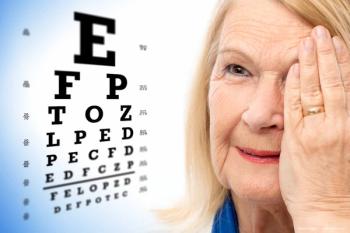
Screening for diabetic retinopathy: 1 image says it all
Investigators set out to evaluate how well an AI system works when integrated into a handheld smartphone-based retinal camera to screen patients for DR using 1 retinal image in each eye.
Brazilian clinicians reported that a portable retinal camera combined with artificial intelligence (AI) demonstrated high sensitivity for screening diabetic retinopathy (DR) using only one image per eye.1 Fernando Marcondes Penha, MD, the first author of the study, is from Fundacao Universidade Regional de Blumenau and Botelho Hospital da Visão, both in Blumenau, Santa Catarina, Brazil.
In this study, investigators set out to evaluate how well an AI system works when integrated into a handheld smartphone-based retinal camera to screen patients for DR using 1 retinal image in each eye.
The study used images that were obtained from patients with diabetes during a mass screening programme for DR in southern Brazil. The images were analysed automatically using an AI system (EyerMaps, Phelcom Technologies LLC, Boston) with 1 macula-centered, 45-degree field-of-view retinal image in each eye. The results were compared to the assessment carried out by a retinal specialist, considered the ground truth, who used two images per eye. Patients with ungradable images were excluded from the analysis.
The study included 686 patients (average age, 59.2; 56.7% women; diabetes duration, 12.1 years). The rates of insulin use, daily glycemic monitoring and systemic hypertension treatment were 68.4%, 70.2% and 70.2%, respectively. Although the vast majority (97.3%) of patients were aware of the risk of blindness associated with diabetes, more than half of them underwent their first retinal examination during the screening event; most (82.5%) relied exclusively on the public health system. About 43.4% of individuals were either illiterate or had not completed elementary school.
The investigators reported the following DR classification based on the ground truth: absent or nonproliferative mild DR 86.9% and more-than-mild DR 13.1%. The AI system achieved the following respective values for sensitivity, specificity, positive predictive value and negative predictive value percentages (95% confidence interavl) for more-than-mild DR as follows: 93.6% (range, 87.8–97.2), 71.7% (range, 67.8–75.4), 42.7% (range, 39.3–46.2) and 98.0% (range, 96.2–98.9). The area under the receiver operating curve was 86.4%.
The authors concluded, “The portable retinal camera combined with AI demonstrated high sensitivity for DR screening using only 1 image per eye. This offers a simpler protocol compared to the traditional approach of 2 images per eye. Simplifying the DR screening process could enhance adherence rates and overall programme coverage.”
Reference
Penha FM, Priotto BM, Hennig F, et al. Single retinal image for diabetic retinopathy screening: performance of a handheld device with embedded artificial intelligence. Int J Retin Vitr. 2023;9: 41;
https://doi.org/10.1186/s40942-023-00477-6
Newsletter
Get the essential updates shaping the future of pharma manufacturing and compliance—subscribe today to Pharmaceutical Technology and never miss a breakthrough.















































